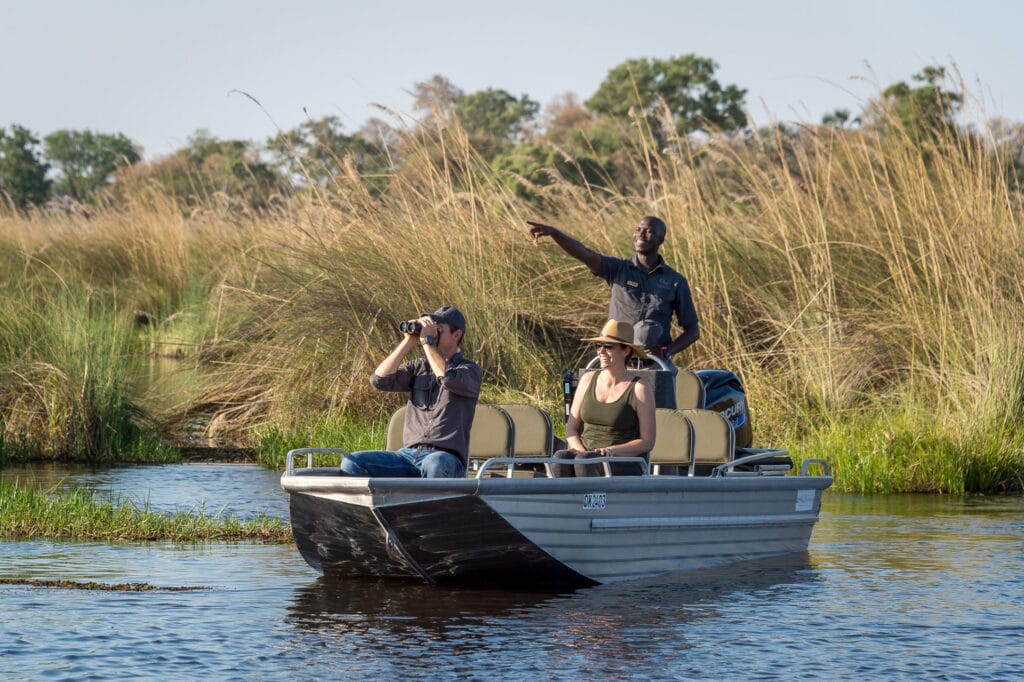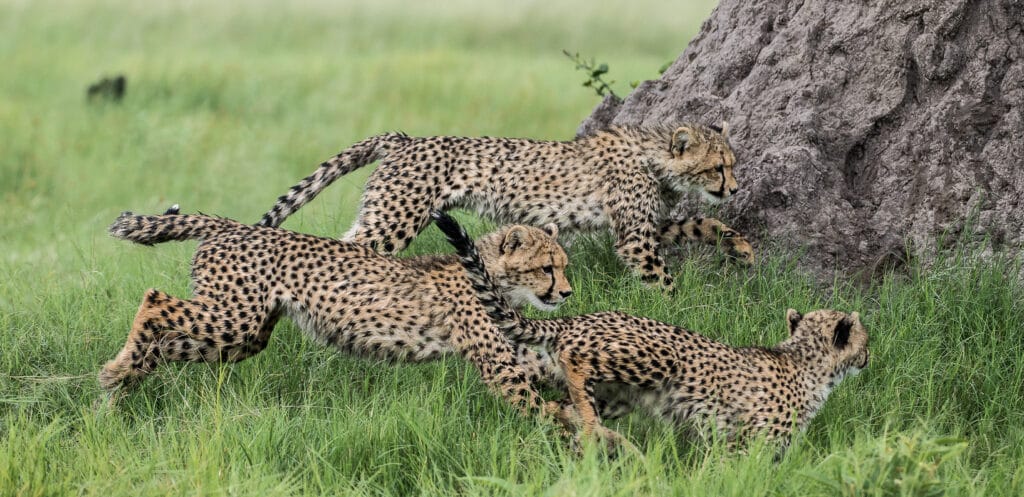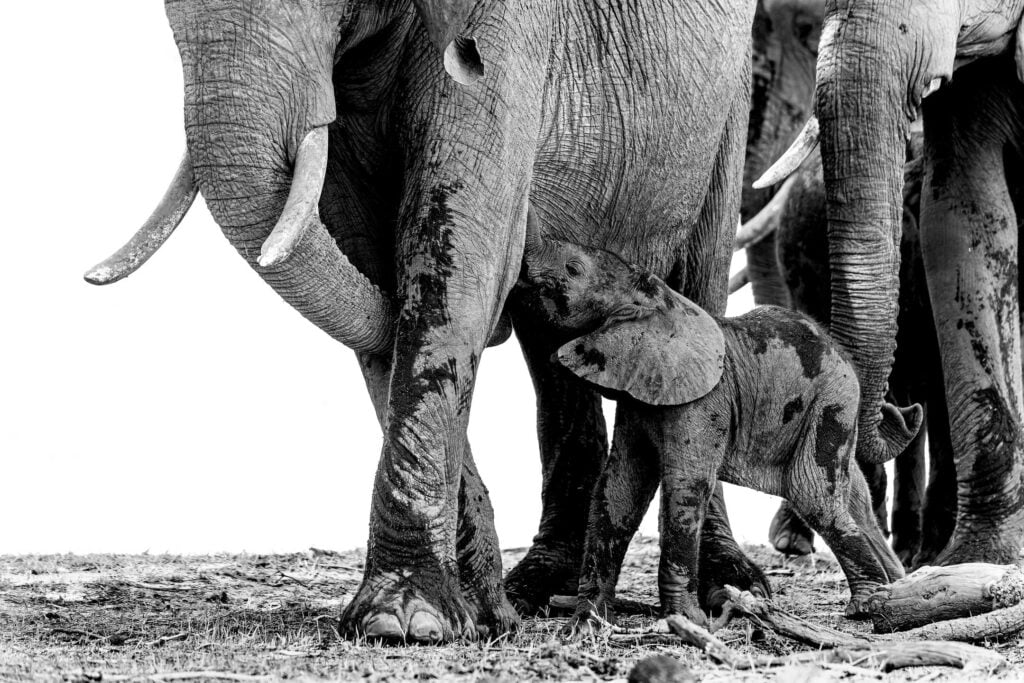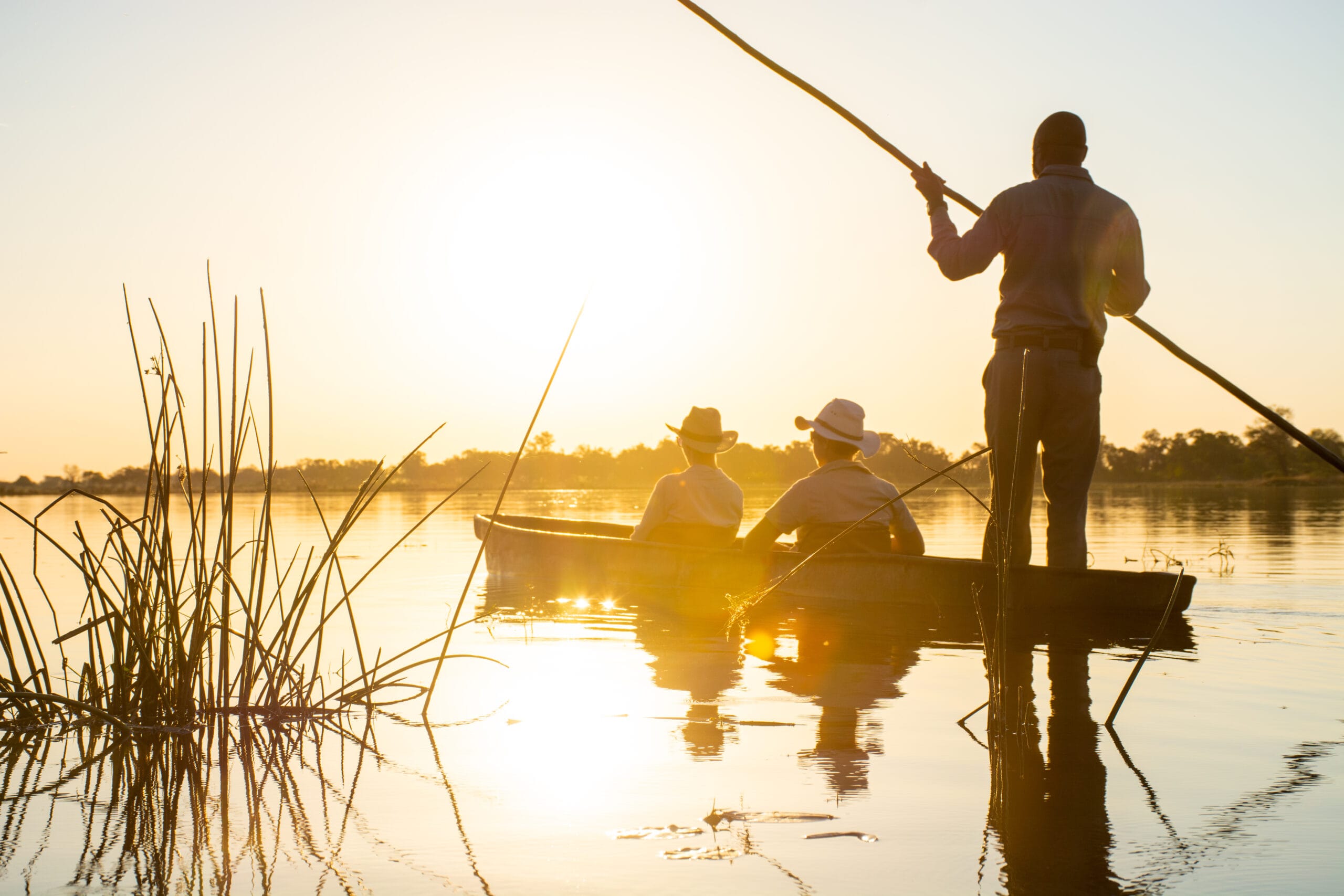A year round destination, Botswana is an astonishing safari country. With diverse habitats and huge tracts of land under conservation, a safari in Botswana is a rewarding experience. Whether you are keen to see predators or birds, glide down a channel of the Okavango Delta in a mokoro (traditional dugout canoe) or take a game drive to get closer to the wildlife, sleep under the stars or walk with meerkats, it is a country which has it all.
One of the main questions we get asked is ‘When is the Best time to visit Botswana’? There is no firm answer to this as it will depend on you, your interests and other factors such as budget as well. Here we have given an overview of what you can expect in Botswana throughout the year. Traditionally there are two seasons – dry and wet – but there are nuances within these times which this rather blunt division overlooks. We have broken it down further as a result.

January – March
A beautiful time of year to visit with plenty of young wildlife around and migratory birds as well, many of which are in their breeding plumage. This is the time of year, like much of Southern Africa, that Botswana receives it’s rains. This is therefore classified as the wet season, but do not let the likelihood of getting wet put you off visiting as wildlife viewing is still excellent. Unlike some it’s neighbours, Botswana’s prime wildlife viewing areas are largely sandy soiled. This results in shorter, and less dense, vegetation making wildlife viewing easier.
The waters of the Okavango Delta will be at their lowest and therefore not all properties within the Delta are able to offer the water based activities such as boat and mokoro trips (dug out canoes). If this is important for you – and it is a magical way of exploring the Delta – then choose a camp which is on a deep water channel that can offer these activities throughout the year.
The Makgadikgadi salt pans and Nxai Pan are transformed at this time of year as the rain causes the nutrient-rich grasses to grow. This leads to two zebra migrations; one sees animals moving from the from the Okavango Delta into the Makgadikgadi Pans and the other from the Chobe River area into Nxai Pan, the latter being the longest mammal migration in Africa. Combining a stay in these areas with a camp in the Okavango Delta will offer huge diversity and contrast, both in scenery and wildlife seen.

April – June
April in Botswana generally sees the start of the dry season, with the landscape still green and the chance of some late rain in April. Water sources are abundant, though the Okavango Delta will likely still be low as the floodwaters generally arriving into the Delta in early May. As this season continues so the waters continue pushing through the Delta, usually reaching the outskirts of Maun at the end of May / early June.
You can expect warm days with the evenings turning increasingly cool as the months progress. With plenty of young wildlife still around and the cool days, longer game drives are possible with the animals tending to be more active during the day. This is a beautiful time of year to visit Botswana, with the change of seasons, little chance of rain as you go through the year and shoulder season prices in April and May. More and more camps are able to offer the boating and mokoro trips in the Okavango Delta.

July – October
The height of the dry season in Botswana brings with it amazing wildlife viewing opportunities by land or water. The prolific wildlife moves to the more permanent sources of water, including in the Delta, Savuti Marshes and Chobe River. with the greater numbers of herbivores, predator sightings are great and the wild dog start to den.
With plenty of water around for all the animals and with the vegetation dying back the visibility only increases, ensuring wildlife viewing is varied and good. The floodwaters of the Okavango Delta start to recede in September, leaving being open floodplains with fresh grasses coming through. This, of course, attracts herbivores to them and in turn the predators are also around. From mid-August the carmine bee-eaters start arriving, turning the sky crimson. Nesting in the river banks these birds return year on year to nest and have their young.
In the Makgadikgadi pans, the landscape is transformed. The pans have dried out and the endless expanses of seemingly empty plains belies the reality. They still play host to a surprising amount of wildlife, including desert adapted species such as habituated meerkats and brown hyena. The palm islands provide habitats for herbivores whilst the water holes provide the ever important water. This very arid region is in stark contrast to the Okavango Delta, Chobe and Linyanti in the wildlife seen, landscape and activities possible.

You can expect warm clear days with temperatures in increasing through the months. In July and August particularly temperatures drop considerably overnight and by September the evenings are also warming up nicely. By October you can expect hot weather with temperatures into the late 30’s and there is a chance of an early thunderstorm towards the end of this season which tends to be dramatic – and also a relief as it clears the air.
Prices will be at their peak at this time. Through a combination of this time of year traditionally being seen as the best for wildlife viewing and the higher visitor numbers during these months.

November – December
The start of the so-called wet season, the rains tend to arrive in the form of storms which last a couple of hours, clearing the air. Temperatures are high and before a storm breaks the humidity can also be high. With the onset of the rains there is plentiful young wildlife about as many animals have their young at this time. This in turn means there tends to be a lot of predator action as well.
Migratory birds will arrive to nest, often in their breeding plumage and it is a time of plenty throughout the country. Vegetation starts to recover from the long dry season and there is plenty of food for all about. It is a magical time of year; the change of season bringing stormy skies, wonderful light for photography and plenty of action with the wildlife.
In addition, prices will start dropping, often in the middle of November, with Christmas tending to be back up to high season prices and it is worth keeping in mind that some camps, especially those not on the permanent deep-water channels in the Okavango Delta, will not be able to offer the water-based activities due to the low water.

Botswana truly is a country which can be visited throughout the year and depending on your wishes there may be a time of year which suits you better than another. The peak season is there for a reason; seeing the Delta in full flood is a spectacular sight, but don’t let this detract you from the charms and benefits of travelling out of these peak months.
If you would like to discuss a holiday to Botswana, or for any other holidays to East and Southern Africa or the Indian Ocean, please get in touch with Lucinda, she would be delighted to help.
